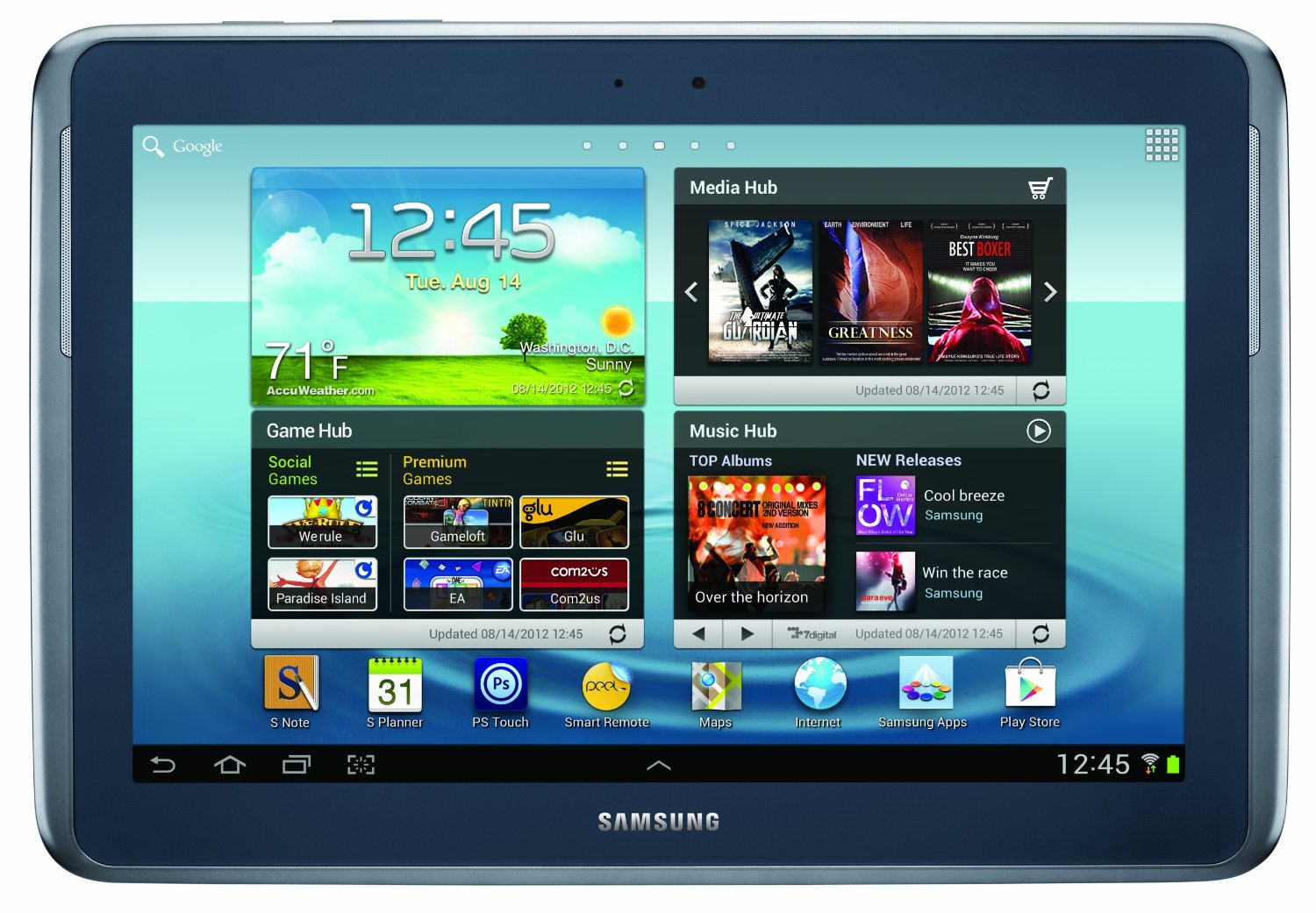By Tech Powered Dad | June 18, 2013

Samsung’s Note tablets offer advanced note taking features other tablets lack.
At the end of this post, I’ve listed the best selling tablets on Amazon (as of June 2013) with links to their Amazon listings, as of June. I have a few thoughts on these tablets both in general and from the standpoint of teachers and students. This is a post I intend to update every so often as new tablets are released and my opinions on the best tablets for students shift over time, so if you’re not in the market now, check back in a few months to see what’s new.
First, the smaller tablet in the 7 to 8-inch range has become a big seller in the past year. Yes, this list is the best seller list on Amazon, so it’s undoubtedly biased towards Kindle Fire models, the most popular of which is 7 inches. That said, the smaller tablets are popular throughout this list. The iPad Mini is the top selling iPad model on Amazon. I can verify from observing my students at school this year that this trend holds up in the real world. Students do seem to really enjoy the smaller tablets for their portability, and their parents seem to enjoy the break they get on price for them. For price and convenience, I give the thumbs up to the smaller tablet model.
Second, it’s pretty clear from looking at this list that tablet purchasers are willing to save a few bucks on getting an outdated model. There are several really outdated models on this list, in particular the original Kindle Fire checking in at #8. This is a trend I can’t get behind unless your budget is so strapped that you truly have no alternative. In all likelihood, the average teacher or student is going to have their tablet for 2-3 years. Tablets, especially smaller ones, have become so affordable that it’s worth spending the extra $50-$100 to get something current, not an outdated model that you’ll be stuck with for the next several years. Keep in mind that we are expecting refreshes of some of the most popular models over the next few months. Rumor has it that the Nexus 7 from Google will get a refresh before the end of the summer. We will also likely hear about a new Kindle Fire and iPad well before Christmas time.
Third, students and teachers should be aware of what app “ecosystem” they are buying into. At this point, the main choices are Apple’s iOS (the iPad), Google’s Android (Nexus 7 or Samsung Galaxy Tab line), or a modified version of Android like the Kindle Fire, which has the Amazon App Store (contains much of the lineup of Android Apps but not all). Of course, there are also the Microsoft Surface tablets, but they don’t seem to be getting much traction right now, and I’m always leery of buying technology that doesn’t seem to have very good adoption rate. It decreases community support, the number of apps, hardware add ons, etc.
Unless you are very invested in Amazon services such as Kindle Books, music, streaming video, I’d suggest choosing either an iPad or true Android tablet. Frankly, even if you are are in deep with Amazon, all of their services work just fine on iPads and Android tablets. The choice between an iPad or Android tablet is a tough one for me, a real dilemma I’ll be facing in the coming months as my iPad 2 continues to get long in the tooth. The iPad packs a punch from a standpoint of educational apps, particularly among younger students, that (so far) Android can’t compete with. As a math teacher, the TI-Nspire iPad app is also particularly useful. The iPad is also great for teachers who want to demonstrate what they are doing on their tablet to their students using an Apple TV via Airplay. On the other hand older students may not care about strictly educational apps, and if you use a lot of Google services like Docs/Drive, Gmail, Calendar, YouTube, Maps, etc., the integration on Android is hard to beat. Yes, most of those services can be accessed on the iPad, but in my experience the integration with those services on Android is smoother. For students, it’s also worth taking a look at the Samsung Note models. The Note models come with a non-capacitive stylus, meaning the touch screen knows the difference between your stylus and your “pen.” This makes it much easier to take notes.
When I got to make my next purchase, the choice will likely come down to the latest Nexus tablet and the latest iPad. It’s not an easy call, but if you’re a teacher, you’ve probably already got some opinions on this subject. If you’re the parent of a student, I suggest asking them what they think. You may be surprised to find out they are more educated or opinionated on the subject than you were expecting.
Top Tablets on Amazon (June 2013)
- Kindle Fire HD 7″ (16 GB)
- Kindle Fire 7″
- Samsung Galaxy Tab 2 7″
- Kindle Fire HD 8.9″
- Samsung Galaxy Tab 2 10.1″
- Kindle Fire HD 7″ (32 GB)
- Kindle Fire HD 8.9″
- Kindle Fire
- iPad Mini (16 GB Black)
- Nexus 7 (32GB)
- iPad Retina (16 GB Black)
- iPad Mini (16 GB White)
- iPad 2
- Nexus 7 (16 GB)
- Kindle Fire HD 8.9″ (4G)
- iPad Retina (32 GB)
- Samsung Galaxy Note 10.1″
- iPad Retina (16 GB White)
- Samsung Galaxy Note 8″
- Alldaymall 7″

